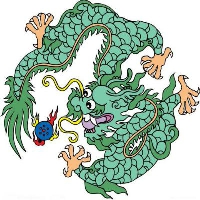Generally, 70 points will be passed in the first and second courses of the teaching resources department. The written test of teaching resources is divided into 150 points, and 70 points converted to 120 points according to the standard are passed. The Examination Center of the Ministry of Education shall determine the national unified qualified score line for each subject according to the examination standards and the current examination situation. Due to the differences in the difficulty of each subject, their qualified scores are different.
What is the passing line of each subject in the teaching resources examination
The qualified score line of the written examination of the national unified examination of educational capital is uniformly defined by the Ministry of Education of the People's Republic of China. The qualified score line of educational capital is specified as 150 points per subject, and the final score of the teacher's qualification certificate is 120 points, and 70 points is the passing line.
The score of the teaching material report ≠ the score of the paper. The score line of the written teaching material examination is determined according to the passing rate. The Examination Center of the Ministry of Education determines the national unified qualified score line of each subject according to the teaching material examination standards and the current teaching material examination situation.
Due to the differences in the difficulty of each subject of the teaching materials, the qualified scores of the teaching materials examination are different. The teaching resources are the qualified scores of all subjects. The original scores on the 0~150 subscale of examinees are converted into the converted scores on the 0~120 subscale by using the linear conversion method, and the qualified scores of all subjects are converted into 70 scores.
Which one is sad about the second one in the teaching material department
The difficulty of educational knowledge and ability in the second teaching material subject lies in the fact that there are too many knowledge points and it is difficult to organize recitation. I believe that anyone who has read the exam book of Educational Knowledge and Ability of Teaching Material Section II should know that the most difficult part of teaching material is that there are too many and fragmented knowledge points, which makes you unable to sort out and recite. Many examinees will get stuck in this subject for the first time in the teaching resources examination, which shows how broken the knowledge is and how hard it is to memorize it after a long time.
The simple part of the comprehensive quality of the first teaching material subject and the knowledge and teaching ability of the four subjects is that the classification of questions is clear, and you can answer questions by remembering the skills of teaching material. It can be said that the subject of "Teaching Material Subject - Comprehensive Quality" is the simplest of the three subjects, because the big question of "Teaching Material Subject - Comprehensive Quality" is the qualification type. As long as you remember the answers and answer skills of those big questions, basically this subject will have no problems.
The difficulty of teaching materials examination has a lot to do with their knowledge reserves, learning ability and learning attitude. Whether they can have a set of learning methods suitable for themselves, how non normal students should digest the unskillful pedagogical and psychological knowledge, whether they can stand loneliness and calm down to study will directly affect the results of teaching materials examination.
In fact, it mainly depends on whether you work hard. If you are usually well prepared and have a clear understanding of the test nodes, generally speaking, the test is not as difficult as you think. Of course, if you don't study hard at ordinary times, then it is not so easy to get the teaching capital.

